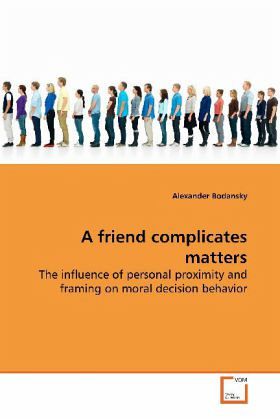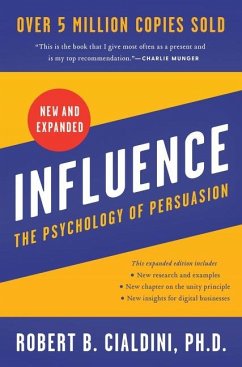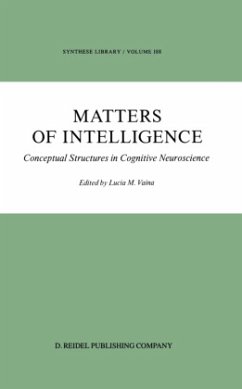
A friend complicates matters
The influence of personal proximity and framing on moral decision behavior
Versandkostenfrei!
Versandfertig in 6-10 Tagen
32,99 €
inkl. MwSt.

PAYBACK Punkte
16 °P sammeln!
To explain decision behavior by reducing it to utility maximization, as Kahneman and Tversky (2000) do, or to intuitive behavior, as Gigerenzer (1996) does, is to risk oversimplification. There is no single definition of rational decision behavior. The context defines what decision behavior can be evaluated as rational. In the context of morality, subjects base their decision behavior on four different ethical positions: deontology, hedonism, intuitionism and utilitarianism. In this article the classical Asian disease problem (ADP), used by Kahneman and Tversky (1981) to show the framing effec...
To explain decision behavior by reducing it to
utility maximization, as Kahneman and Tversky (2000)
do, or to intuitive behavior, as Gigerenzer (1996)
does, is to risk oversimplification. There is no
single definition of rational decision behavior. The
context defines what decision behavior can be
evaluated as rational. In the context of morality,
subjects base their decision behavior on four
different ethical positions: deontology, hedonism,
intuitionism and utilitarianism. In this article the
classical Asian disease problem (ADP), used by
Kahneman and Tversky (1981) to show the framing
effect, is understood as a moral dilemma. To reach a
decision, subjects relied to varying degrees on all
four ethical positions. Variation of the ADP`s
personal proximity influenced subjects decision
behavior, leading to the disappearance of the
framing effect, and changing the extent of subjects
reliance on the four ethical positions.
utility maximization, as Kahneman and Tversky (2000)
do, or to intuitive behavior, as Gigerenzer (1996)
does, is to risk oversimplification. There is no
single definition of rational decision behavior. The
context defines what decision behavior can be
evaluated as rational. In the context of morality,
subjects base their decision behavior on four
different ethical positions: deontology, hedonism,
intuitionism and utilitarianism. In this article the
classical Asian disease problem (ADP), used by
Kahneman and Tversky (1981) to show the framing
effect, is understood as a moral dilemma. To reach a
decision, subjects relied to varying degrees on all
four ethical positions. Variation of the ADP`s
personal proximity influenced subjects decision
behavior, leading to the disappearance of the
framing effect, and changing the extent of subjects
reliance on the four ethical positions.












